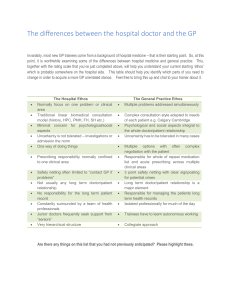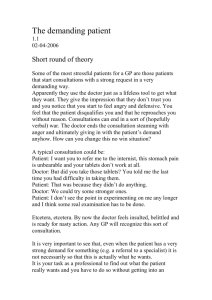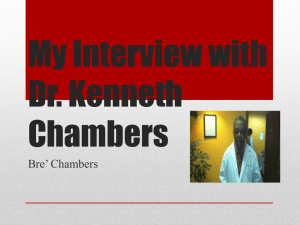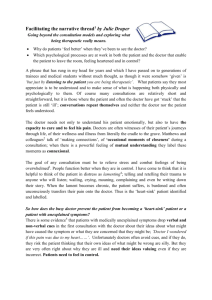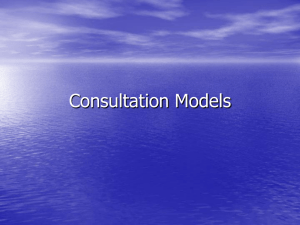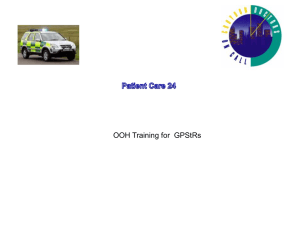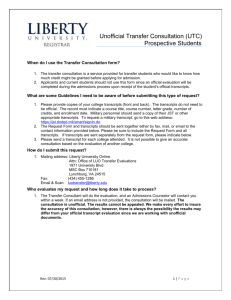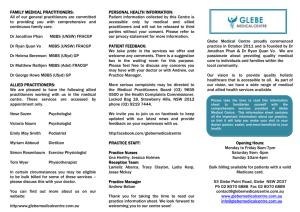Consultation Grid - The Essential Handbook for GP Training
advertisement
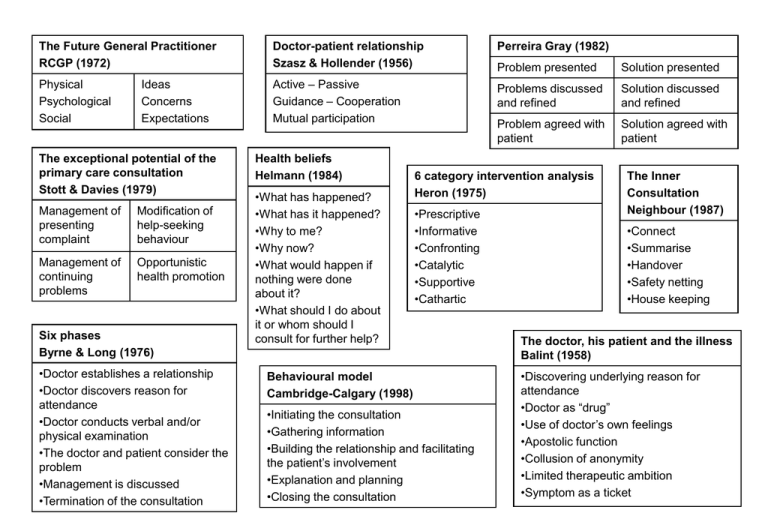
The Future General Practitioner RCGP (1972) Doctor-patient relationship Szasz & Hollender (1956) Physical Psychological Social Active – Passive Guidance – Cooperation Mutual participation Ideas Concerns Expectations The exceptional potential of the primary care consultation Stott & Davies (1979) Management of presenting complaint Modification of help-seeking behaviour Management of continuing problems Opportunistic health promotion Six phases Byrne & Long (1976) •Doctor establishes a relationship •Doctor discovers reason for attendance •Doctor conducts verbal and/or physical examination •The doctor and patient consider the problem •Management is discussed •Termination of the consultation Health beliefs Helmann (1984) •What has happened? •What has it happened? •Why to me? •Why now? •What would happen if nothing were done about it? •What should I do about it or whom should I consult for further help? Perreira Gray (1982) Problem presented Solution presented Problems discussed and refined Solution discussed and refined Problem agreed with patient Solution agreed with patient 6 category intervention analysis Heron (1975) •Prescriptive •Informative •Confronting •Catalytic •Supportive •Cathartic Behavioural model Cambridge-Calgary (1998) •Initiating the consultation •Gathering information •Building the relationship and facilitating the patient’s involvement •Explanation and planning •Closing the consultation The Inner Consultation Neighbour (1987) •Connect •Summarise •Handover •Safety netting •House keeping The doctor, his patient and the illness Balint (1958) •Discovering underlying reason for attendance •Doctor as “drug” •Use of doctor’s own feelings •Apostolic function •Collusion of anonymity •Limited therapeutic ambition •Symptom as a ticket Disease-illness model McWhinney (1972) THE CONSULTATION GRID (2002) Communication skills Problem Information gathering Patient’s parallel Doctor’s parallel Patients agenda Doctors agenda IC&E. Feelings, thoughts,effects Symptoms, signs, investigations Understanding of experience Differential diagnosis Integration Explanation and planning in terms patient can understand/accept The Consultation: seven tasks Pendelton et al (1984) •Define the reason for attendance •Consider other problems •Choose an appropriate action •Achieve a shared understanding •Involve patient in the management •Use time and resources appropriately •Establish and maintain an ongoing relationship with the patient Questioning - open vs closed - reflective, focussed, probing Facilitative - nods, grunts and gestures Active listening - restatements, clarification,empathy, summarising,silence Non-verbal cues - appearance, posture, movement, speech Information giving skills -appropriate language, be specific, not too much and not too early, repeat, reinforce with written material Touch -when appropriate and comfortable Transactional analysis Berne (1970) •Parent (nurturing or critical) •Adult •Child (free or adapted) Games Crossed transactions Reason for attendance Freeling & Harris (1984) •For relief of symptoms •For some other medical service •For official recognition of sickness e.g. certificate •For follow up at doctor’s instigation •For access to other sections of health service •For drugs on which the patient is dependent •As a habitual response to anxieties •For support and recognition •For playing games and acting out dramas •For more than one of the above The Anxious Patient Bendix (1982) •Situations – not symptoms •Repeat the patient’s last words •If you don’t know what to say – keep quiet •There is only one way of interrupting a pause •Never answer questions •Never give advice •Repeat and summarise

